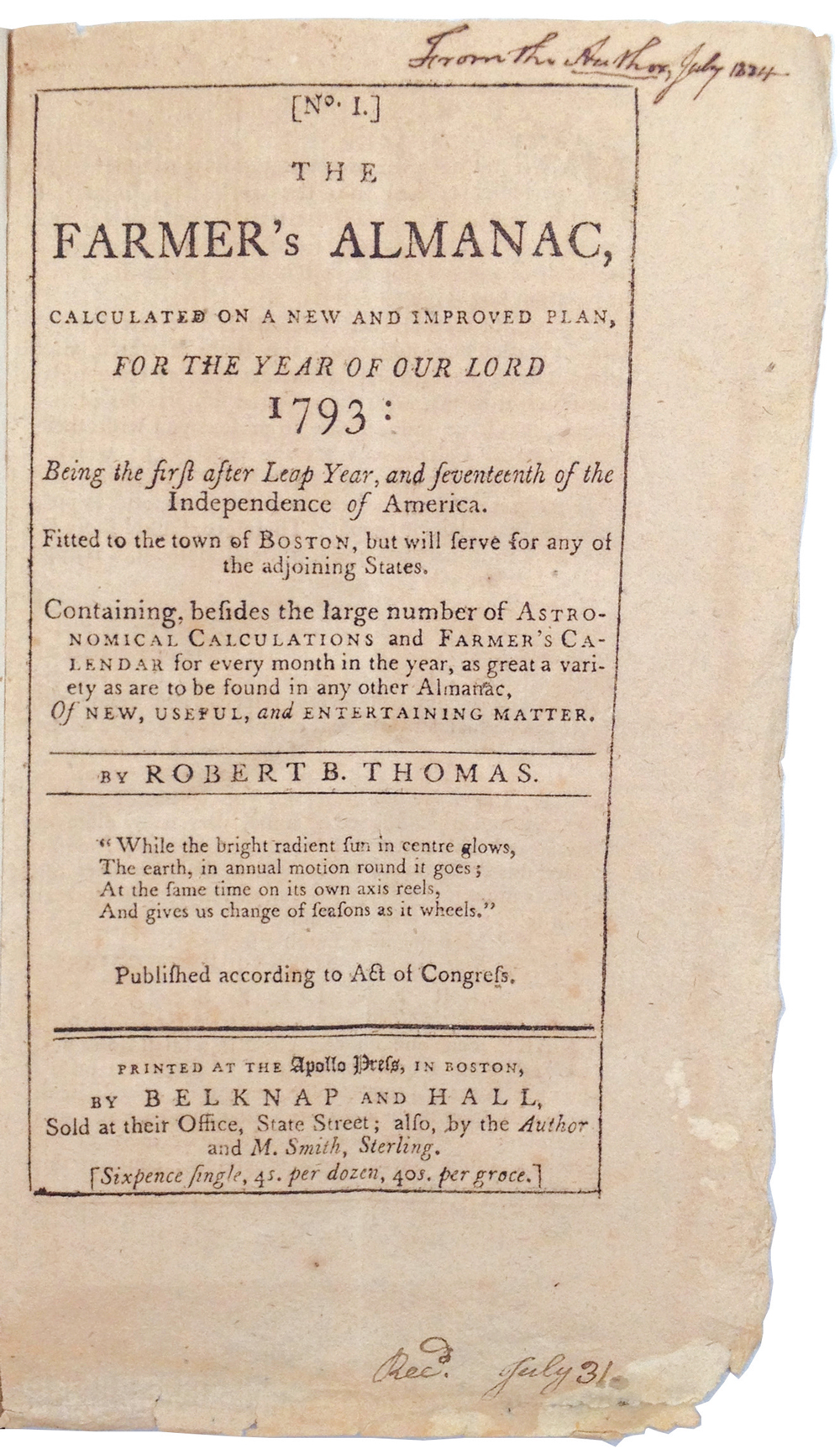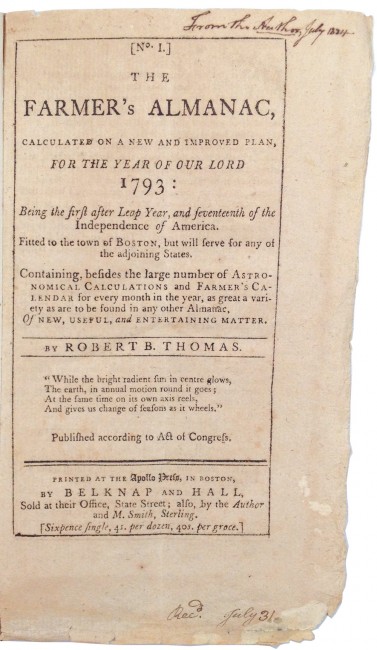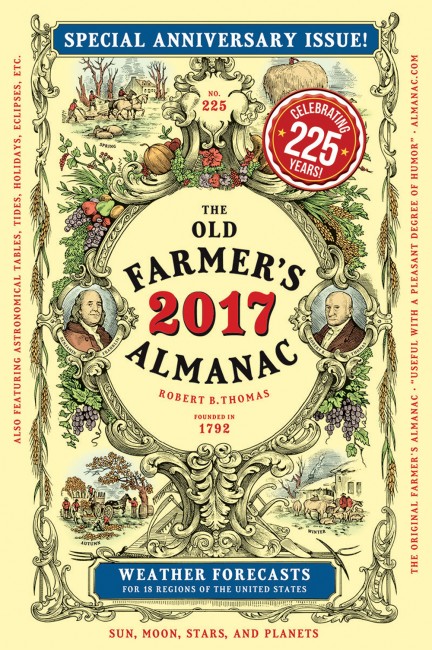The Old Farmer’s Almanac Turns 225 | Up Close
When the first volume of Robert B. Thomas’s Farmer’s Almanac appeared in October 1792, George Washington was just finishing his first term as president. That same month, the cornerstone of the White House was laid in the newly formed federal district of “the city of Washington in the territory of Columbia.” From the start, the […]

The first Old Farmer’s Almanac Issue, 1793.
When the first volume of Robert B. Thomas’s Farmer’s Almanac appeared in October 1792, George Washington was just finishing his first term as president. That same month, the cornerstone of the White House was laid in the newly formed federal district of “the city of Washington in the territory of Columbia.”
From the start, the Almanac offered wisdom, advice, and entertainment on subjects ranging from planting schedules to healthy living, from etiquette and behavior to fishing and the castration of bulls—plus plenty of romantic advice and astrology thrown in.
Thomas devised a “secret weather forecasting formula,” which to this day is kept in a black tin box in the Old Farmer’s Almanac offices here in Dublin, New Hampshire. The first-ever Almanac weather forecast, covering January 1 to 9, 1793, was “cold and frosty … looks like snow.”
By the start of the Civil War, the Almanac was already the longest-running American periodical.
One of the most infamous Almanac weather forecasts was allegedly printed in 1816. Thomas, it’s said, was ill, so the printer sent a messenger to collect the July weather forecast. The messenger returned, saying that the printer should print whatever he wished. He did: a July 13 forecast that called for “rain, hail and snow.” Upon his recovery, a furious Thomas recalled every copy that he could and corrected the issue with a more-seasonable prediction. That July, however, rain, hail, and, yes, snow did fall, thanks in part to the 1815 eruption of Mount Tambora in Indonesia. Thus a legend was born.
The 1832 edition was the first to insert Old into the Almanac’s title. Old was soon dropped, though, and not used again until 1848, when it became The Old Farmer’s Almanac once and for all.

The iconic hole in the upper-left corner débuted in 1851.
Three years before he became president, attorney Abraham Lincoln used the Almanac to defend William “Duff” Armstrong, accused of killing a man by hitting him with a weighted leather “slungshot.” A witness claimed to have seen the attack by the light of the moon. Referring to the Almanac entry for the day in question (August 29, 1857), Lincoln argued—successfully—that his client couldn’t have been identified, because the moon “ran low” that night and wouldn’t have cast much light.
In 1939, Robb Sagendorph, founder of Yankee Publishing and editor of Yankee, acquired the Almanac from Little, Brown & Company. As the Almanac’s 11th editor (and fourth owner), he set about “reestablishing Robert B. Thomas in policy and fact. Beginning in 1941, his original ideas shall be our guideposts.”
In 1942, a German spy was captured on Long Island with a copy of the Almanac in his pocket. Concerned that the enemy was using the book’s moon-phases chart, the government banned weather forecasts from wartime publications. Ever resourceful, Sagendorph—who himself was working for the Office of Censorship at the time—changed the Almanac cover line from weather “forecasts” to “indications.” Throughout the war, a letter from the Office of Censorship was included every year, absolving the Almanac of the prohibition against weather forecasts.
In 1978, Dr. Richard Head retired from his position with NASA to join the Almanac staff and continue his solar research. Dr. Head’s scientific approach to weather forecasting augmented Thomas’s formula. Meteorologist Michael Steinberg has been the Almanac weather forecaster since 1996.
Janice Stillman, the current editor, is just the 13th in the publication’s history. That’s an average tenure of more than 17 years!

Photo Credit : 2017 cover illustration by Steven Noble
Joe Bills
Associate Editor Joe Bills is Yankee’s fact-checker, query reader and the writer of several recurring departments. When he is not at Yankee, he is the co-owner of Escape Hatch Books in Jaffrey, NH.
More by Joe Bills

